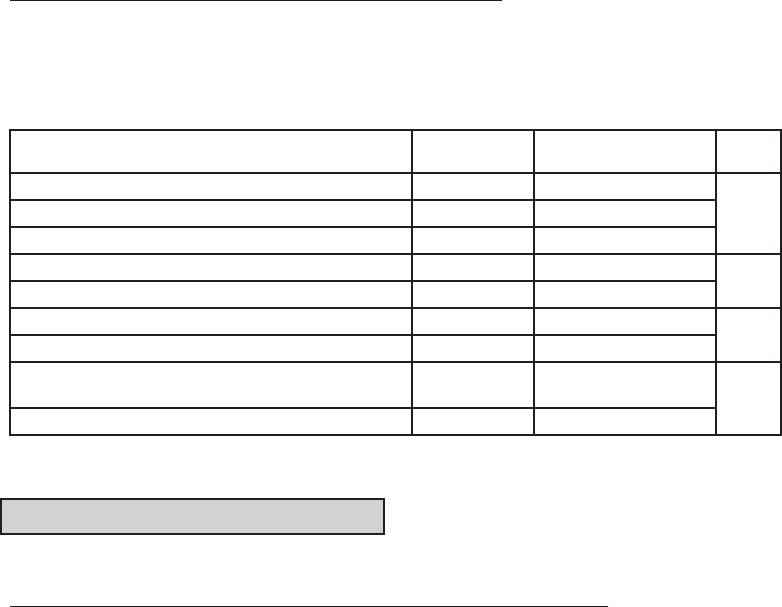
- 101 -
EO1-11116
MA-516-100 SERIES
Selecting Print/Non- print Items on Reports
The following table shows the items on reports that can be programmed to be printed or non-printed according to your
store’s requirements. For further details of programming, refer to Chapter “22. System Option Setting”. If you have
started operations on the register without this programming operation performed, print or non-print status of each item
is determined by the “Initial Status” in the following table. It is recommended, therefore, to change Print/Non-print
status of each item after once taking all the reports.
Initial Status System Option
Before Change Address No. - Bit No.
GT (Grand Total) Print Address 1 - Bit 41 119
Validation Counter Non-print Address 1 - Bit 5
Sum of Negative Departments Non-print Address 1 - Bit 6
Sum of All Departments (except Other Income Depts) Non-print Address 11 - Bit 2 129
Sum of Other Income Departments Non-print Address 11 - Bit 3
Net Sale With Taxes Print Address 13 - Bit 1 131
Net Sale Without Taxes Non- print Address 13 - Bit 2
Receipt Consecutive No. on Journal and every
Receipt 133
Receipt Consecutive No. Resetting Non-resettable Address 15 - Bit 3
Taking Read and Reset Reports
Fundamental Concepts of Various Types of Reports
Four types of Reports are available in connection with the Control Lock positions and the periods of data
accumulation:
Daily Read Report: It can be issued at any time and any number of times during the day. It allows to read
the sales data recorded up to the moment since the corresponding Reset Report
was issued last time (usually yesterday). Taking this type of report will not affect any
sales data in the report memory.
Daily Reset Report: The contents and format are the same as the Daily Read Report. However, it should
be issued only once at the end of the day usually after closing the store. It is the “final”
report that should be kept in file. Taking this type of report will clear all the resettable
totals and counters in the report memory after the report is issued.
Periodical Read Report: It can be issued at any time and any number of times during a certain period defined
by the store (one week, one month, etc.). Thus it allows to read the sales data
accumulated up to the moment since the corresponding Periodical Reset Report
was issued last time.
Periodical Reset Report: The contents and format are the same as the Periodical Read Report. However, it
should be issued only once at the end of the defined period as the “final” report and
be kept in file. Taking this type of report will clear all the resettable totals and counters
in the report memory after the report is issued.
Item
Page
Print Address 15 - Bit 2


















